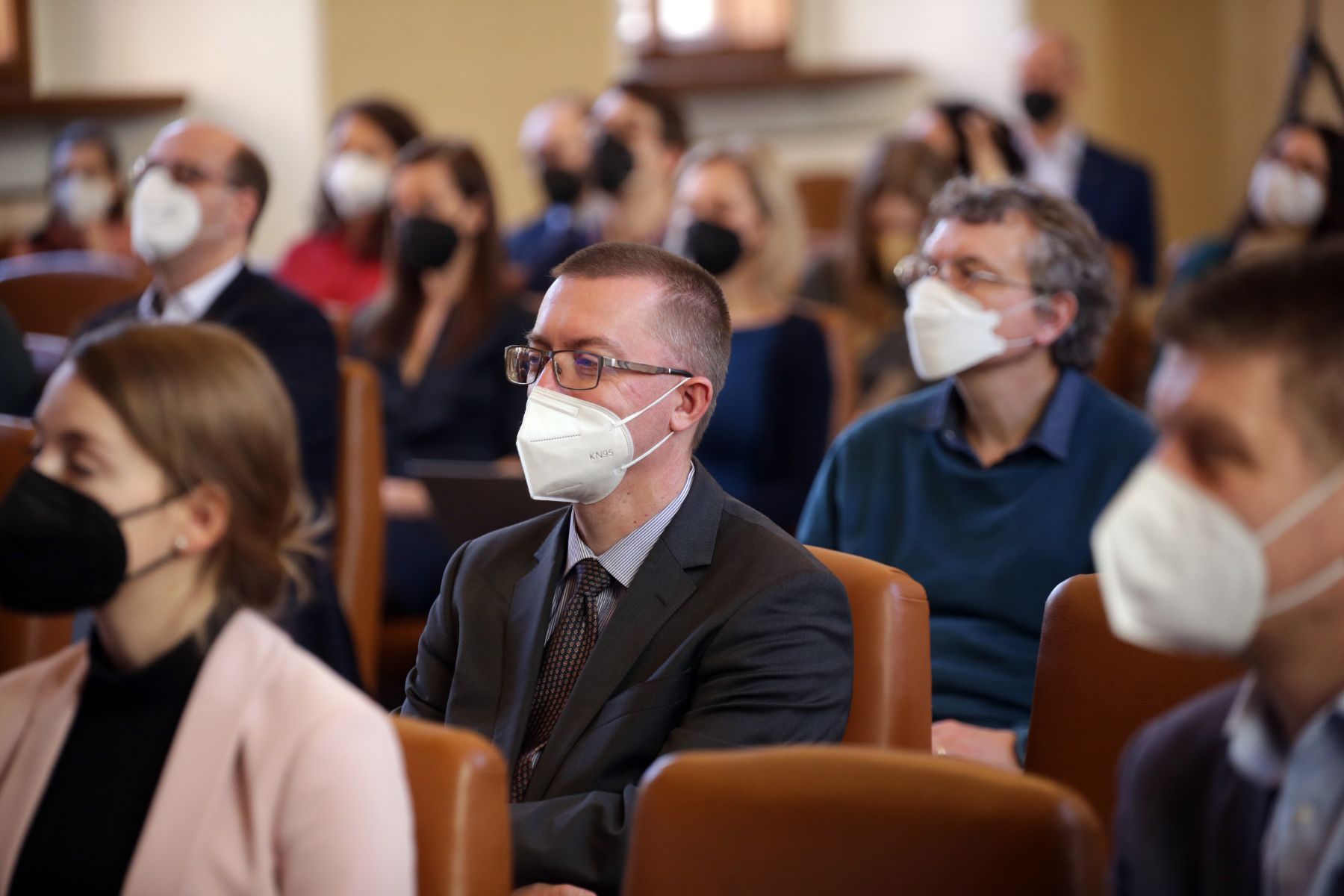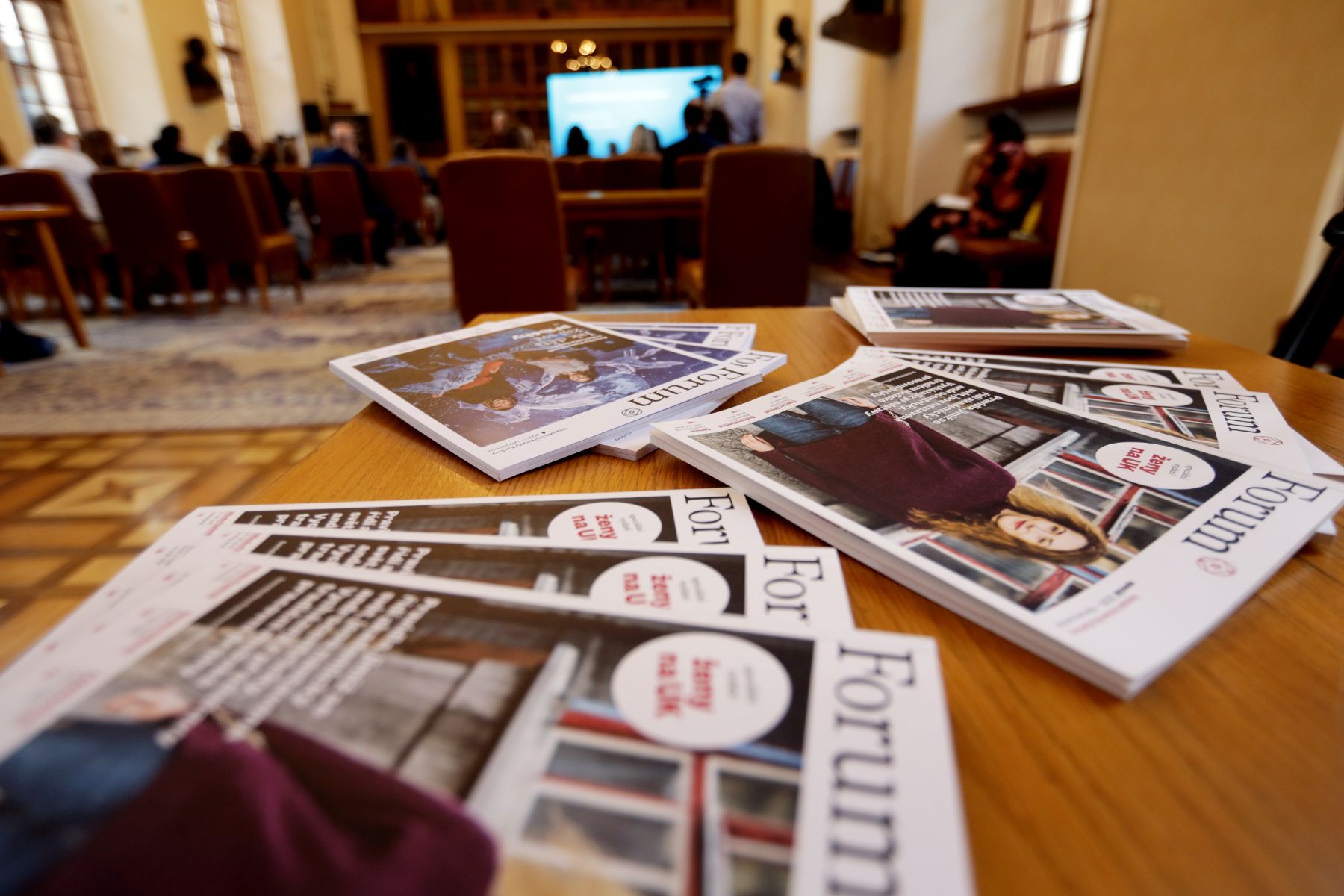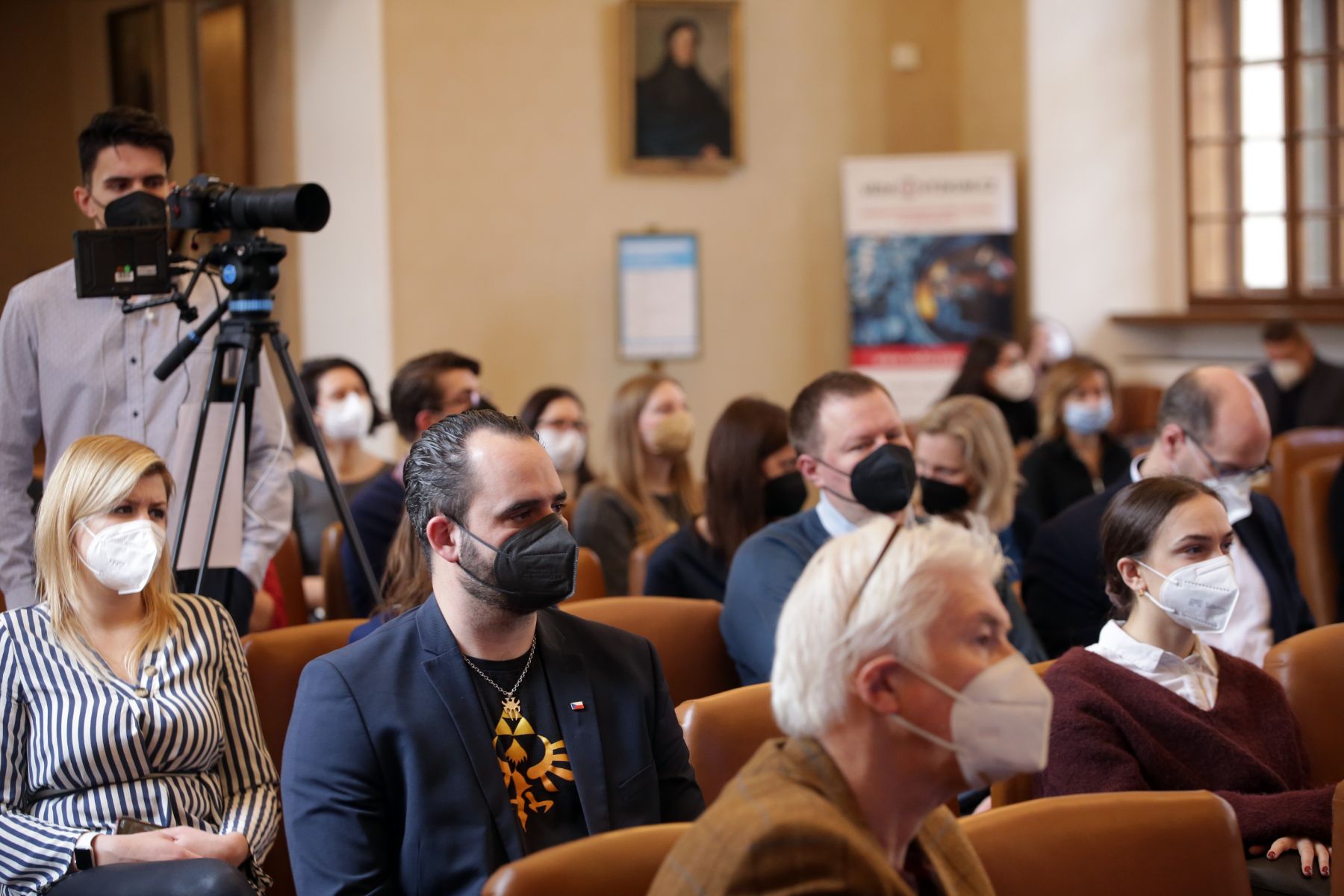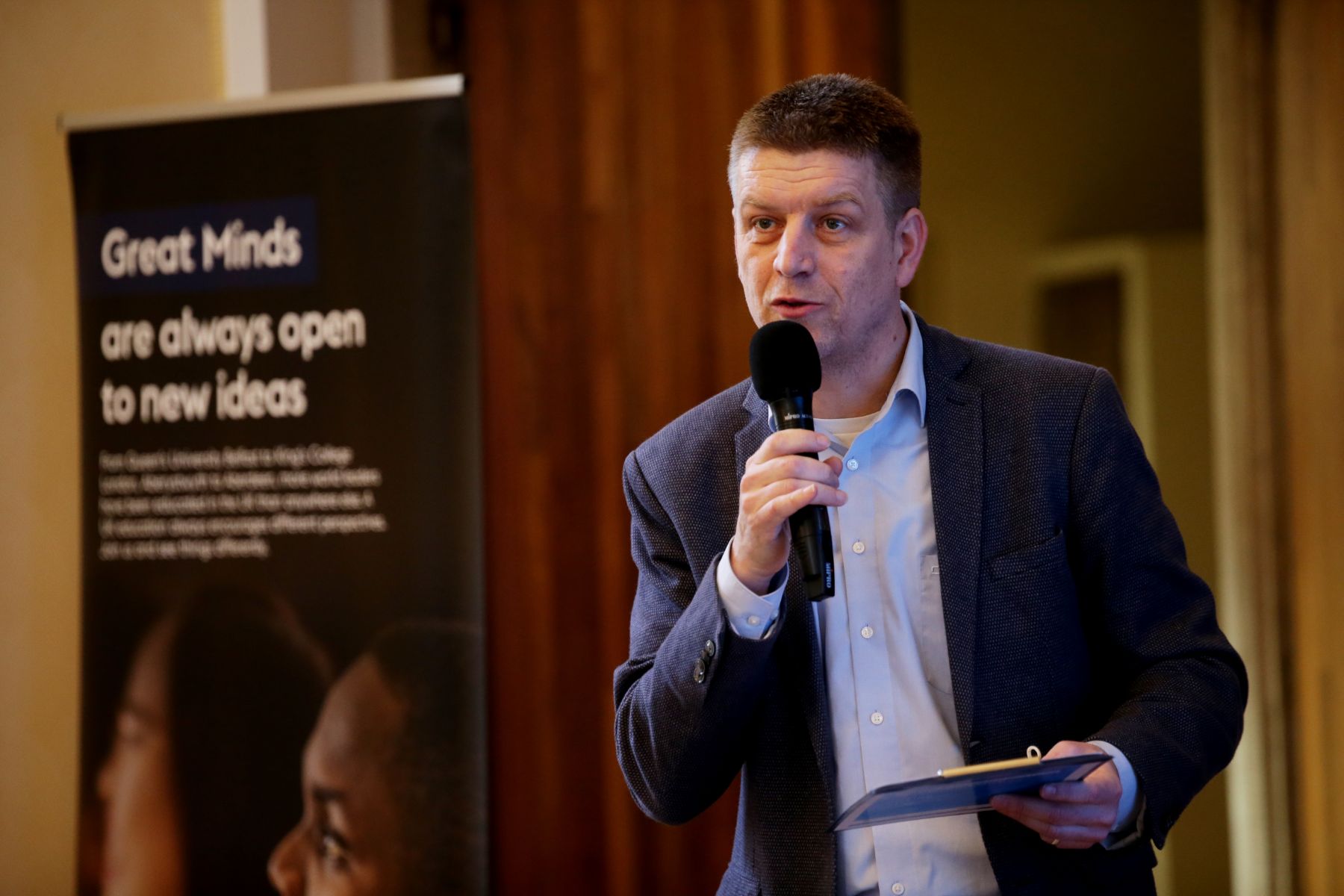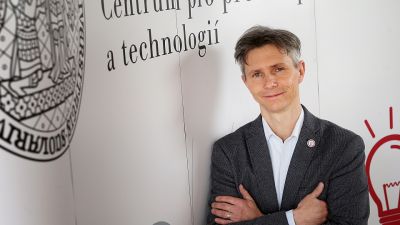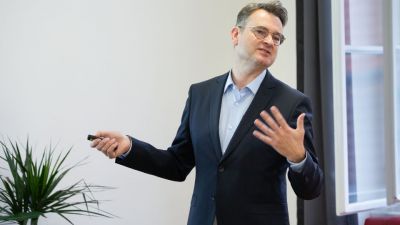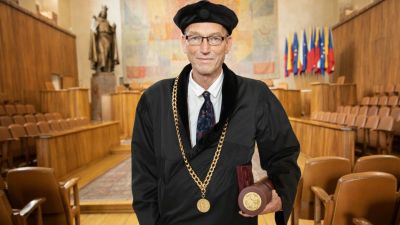Science communication – raising awareness and understanding among the general public, while capturing the thrill of successful science – is something of an art. It isn’t always easy to communicate effectively, not least given the complexity of some fields. But experts agree, it is essential. Successful science communication was the topic of a full-day event this week at Charles University’s Carolinum, with support from Charles University and organised by the British Embassy in Prague, the UK Science and Innovation Network (SIN) and Vědavýzkum.cz. Forum was a media partner.
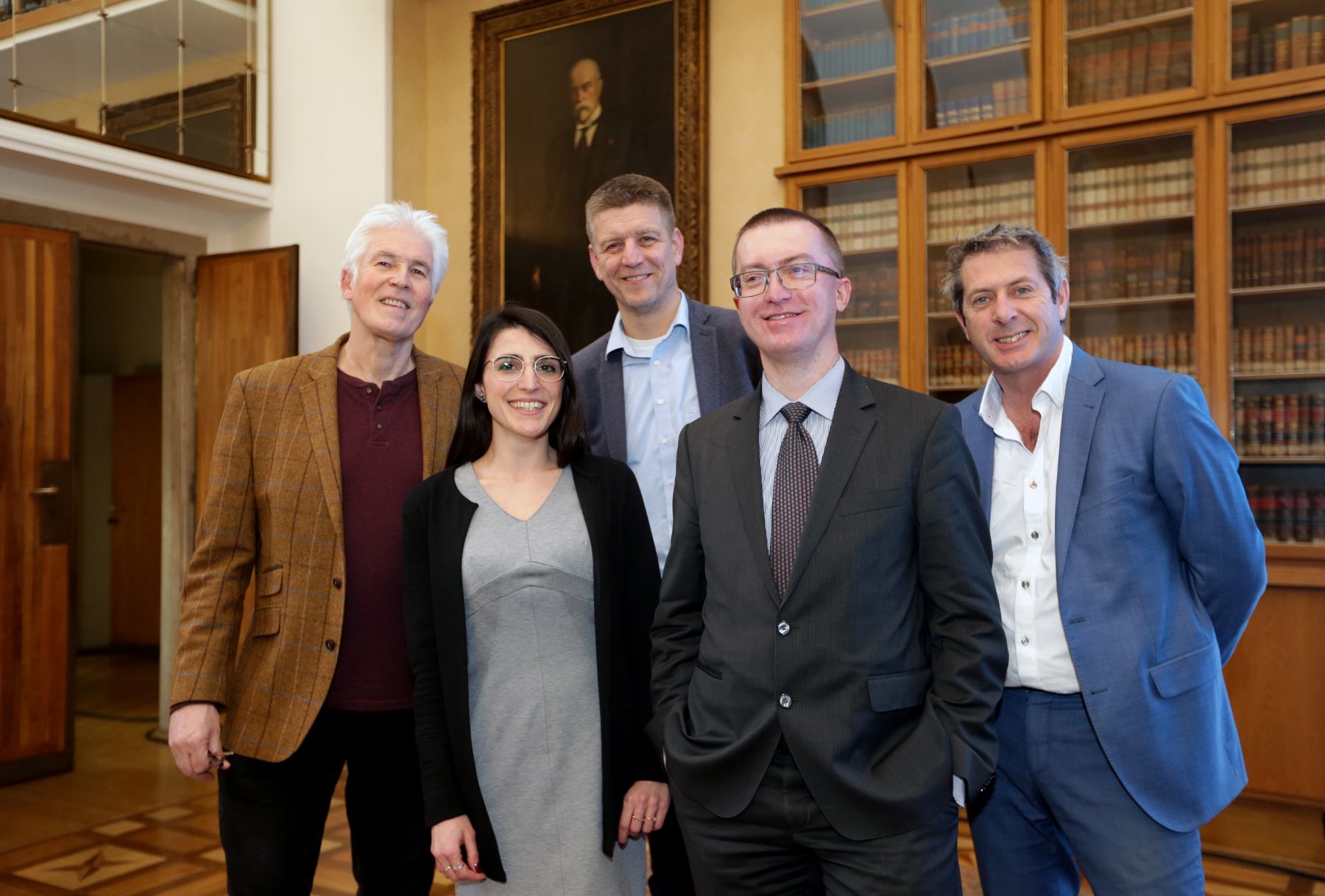
From left: Conference participants Malcolm Love, Cristiana Vagnoni, Aleš Vlk, Otakar Fojt and Iain Stewart.
The one-day conference was opened by CU Rector Milena Králíčková and the British Ambassador to Prague, Nick Archer. Both emphasised the role of science, international scientific cooperation and scientific communication in today's society – not least after two years of the Covid pandemic, when scientific disinformation was rampant and issues surrounding vaccines and lockdowns became highly polarised.
Otakar Fojt, the Science Attaché at the British Embassy in Prague said the conference was important for both Czech and international stakeholders, showing how things were changing and maturing:
“Many of the societal challenges we face require the popularisation and understanding of the results of science, be it infectious diseases, climate change or renewable energy. We simply cannot do without effectively shared knowledge.”
Interest in the event, held both in person and online, was high: around 50 people attended in person while more than 400 participants watched the conference live over the internet. A recording of the day’s presentations and events is to become available.
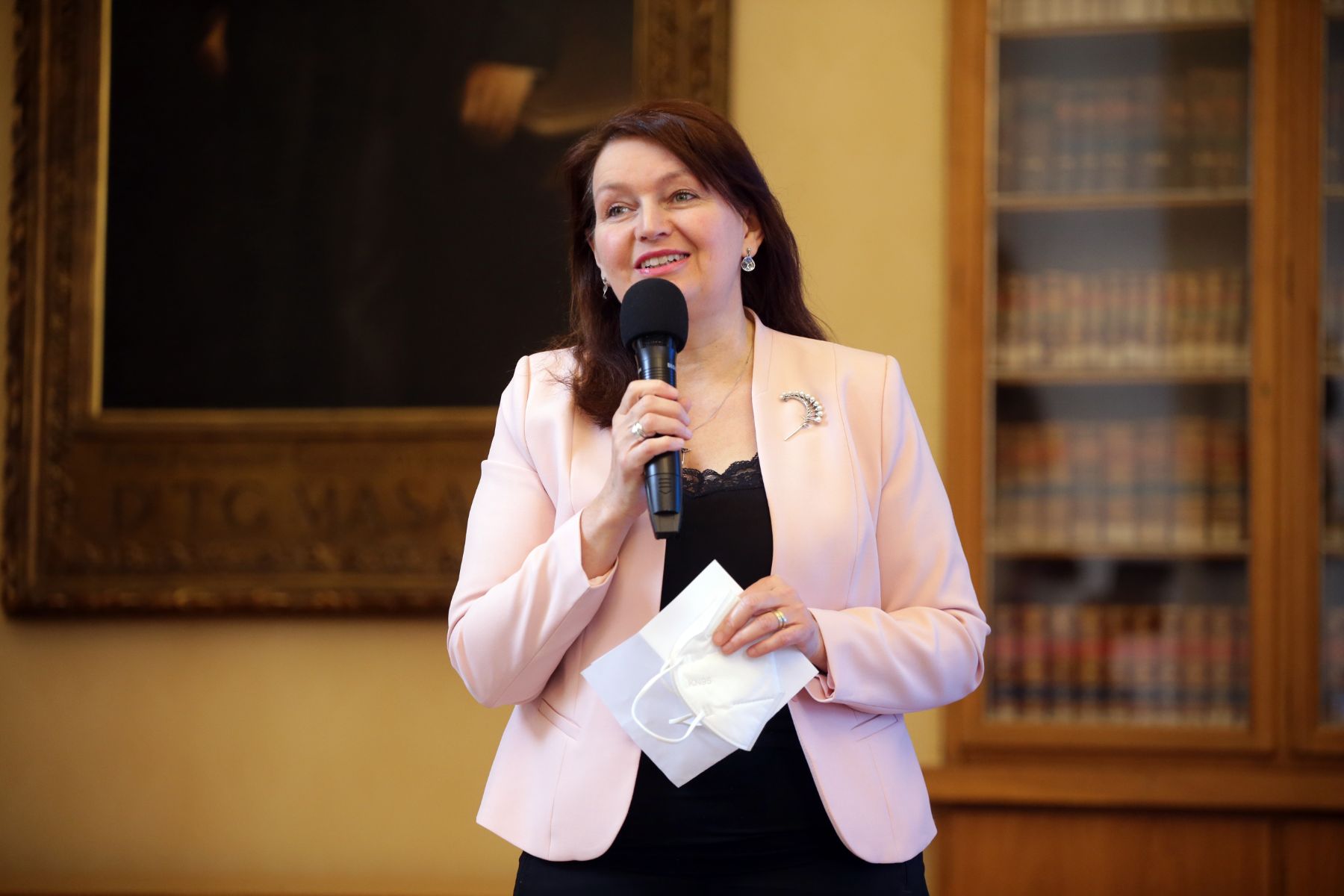
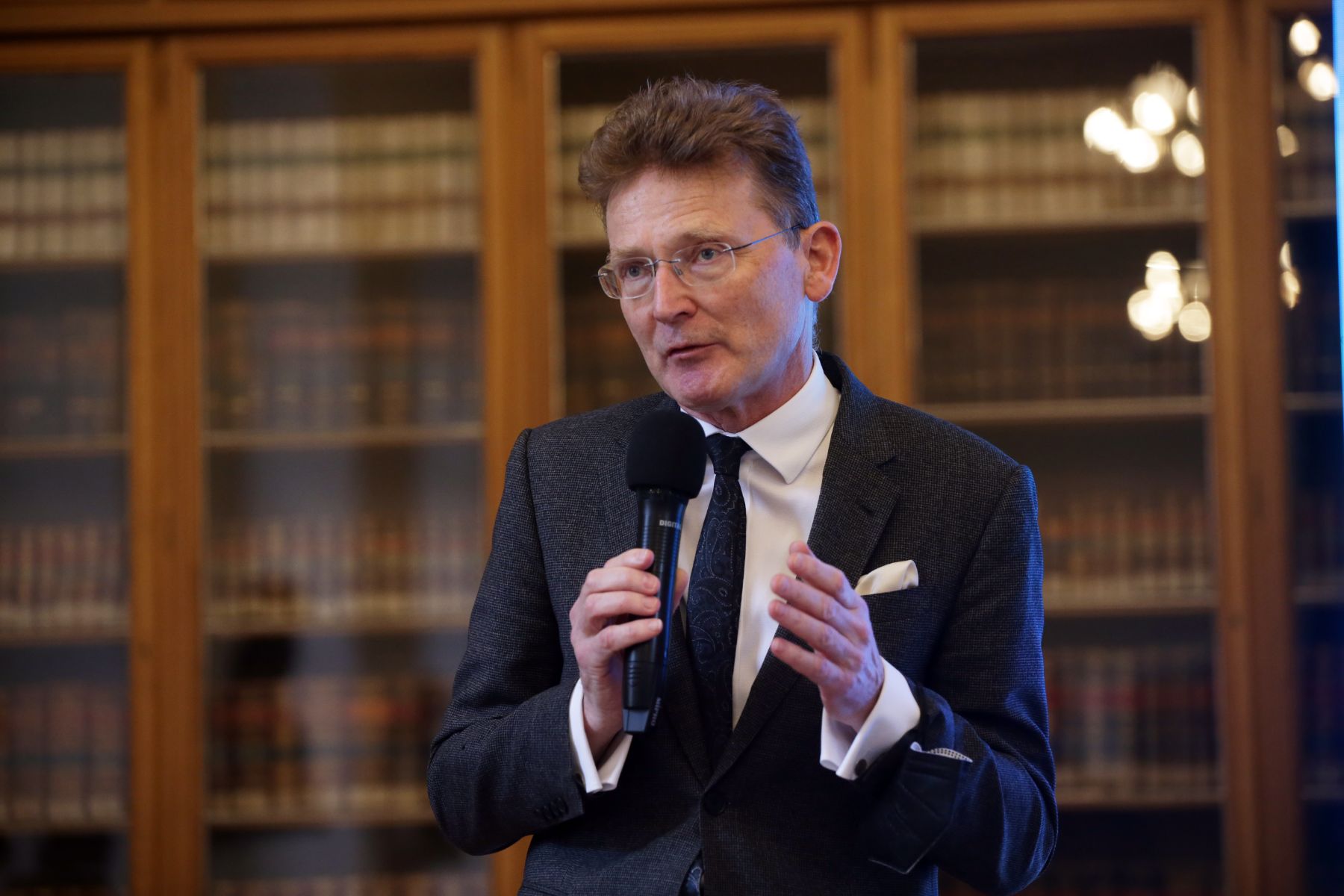
CU Rector Milena Králíčková and the British ambassador to Prague Nick Archer.
To popularise science, you need good stories
The first speaker on the day was Iain Stewart, a geologist aptly nicknamed a “rock star” when it comes to the importance of scientists moving away from publication to public promotion of science for the betterment of society. He emphasised emphatically that too many scientists got caught up in reams of facts which do not always communicate well. Instead of overloading viewers or listeners with too much at once, he suggested, it is better to draw them in, slowly, through story. And the unexpected. To illustrate his point, Stewart showed a clip from a BBC series he worked on called Rise of the Continents, when, fully dressed, he jumps into the water only metres from the tumbling water at Victoria Falls. Unknown to the viewer, there is a natural geological feature at the site known as the Devil’s Pool where boulders create an unseen barrier right at the falls’ edge (some would call it the "ultimate" infinity pool). It makes for stunning viewing. And while still somewhat dangerous (less so in September when the water is low, Stewart explained) the point is that good story-telling, with an element of surprise, gets viewers’ attention.

At the water's edge: Victoria Falls.
Story is the framework on which to hang the facts and once you do, after that you can explain the science, Stewart suggests.
“Communicating science is not about facts, it's about stories and people. Let's explain why, what it's good for, let's get people interested and amazed. Communicating science is fun,” the presenter says. He also explains there is a benefit or additional trade-off for scientists themselves when they learn to communicate their work: “People often don't trust science because they don't understand it enough and they lack information. Let's examine who we are talking to and explain. By communicating science to the public, scientists become better scientists.”
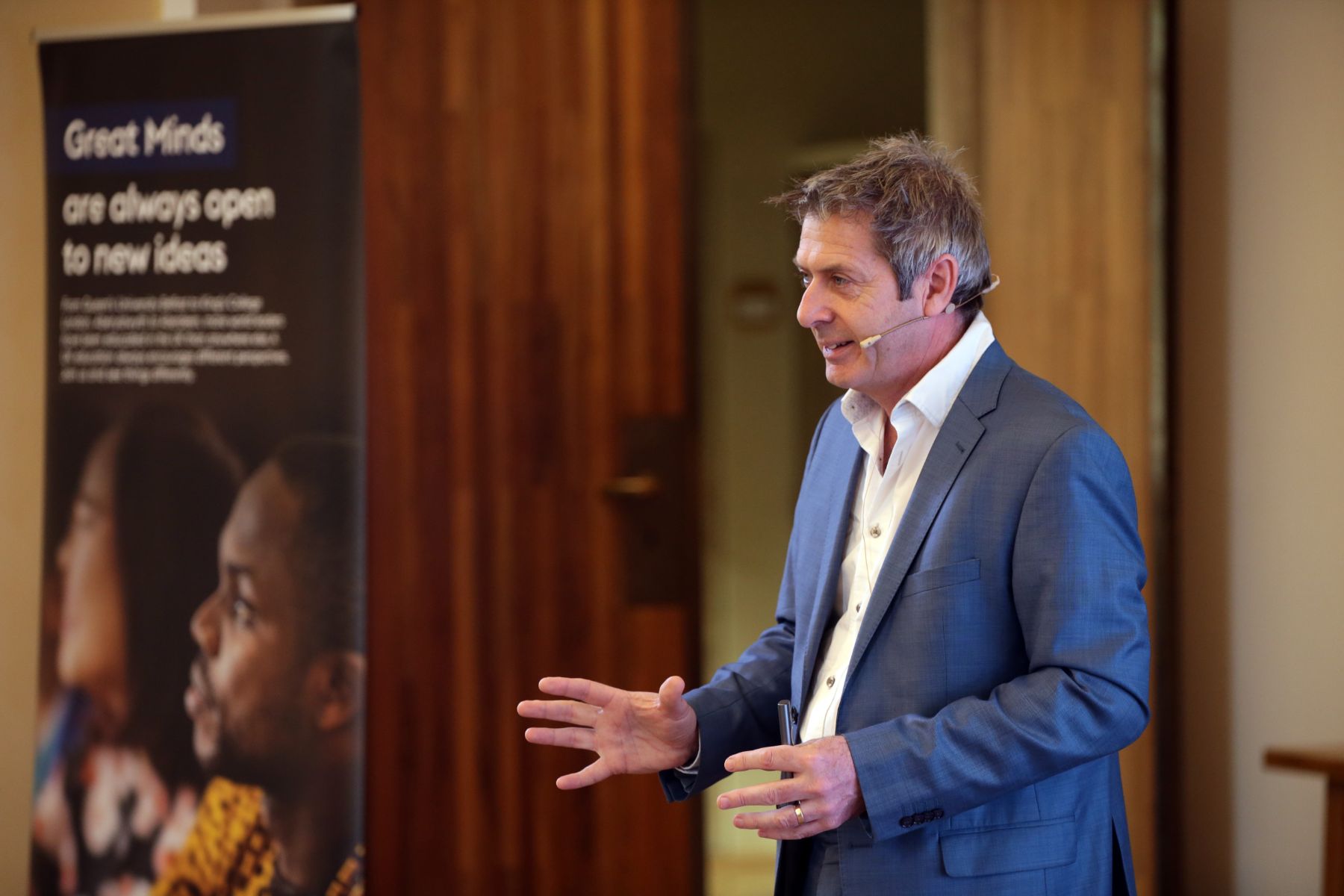
"Rock star" and BBC science presenter and documentarist Iain Stewart.
From Fame Lab with Love
Malcolm Love, a producer of communication skills tutors who works with scientists and other academics at organisations such as NASA and CERN, the British Academy and a number of universities and research institutions, also spoke about the importance of stories as well as training. For many years, he was also the main lecturer for the popular FameLab competition, where participants communicate their science topics in three minutes in an entertaining way.
“Take every opportunity you can to talk about your research, you learn the most by doing,” he shared, emphasizing the importance of listening. “People who believe in conspiracy theories have a truth that is part of their identity. You need to listen to them and try to guide them towards the truth in small steps, for example, asking what would have to happen for them to change their mind. This is a powerful question that provokes their logic.” In his talk, Love cited other reasons for rejecting science and believing in misinformation as selective picking of information that “fit”, listening to self-proclaimed “experts” logical fallacies, and unrealistic expectations of what science can prove. “It helps to understand how misinformation works, then you can respond to it better. Let's listen, let's explain, but let's remember that science is not just misinformation, but scientists have many great stories - let's talk about them.”
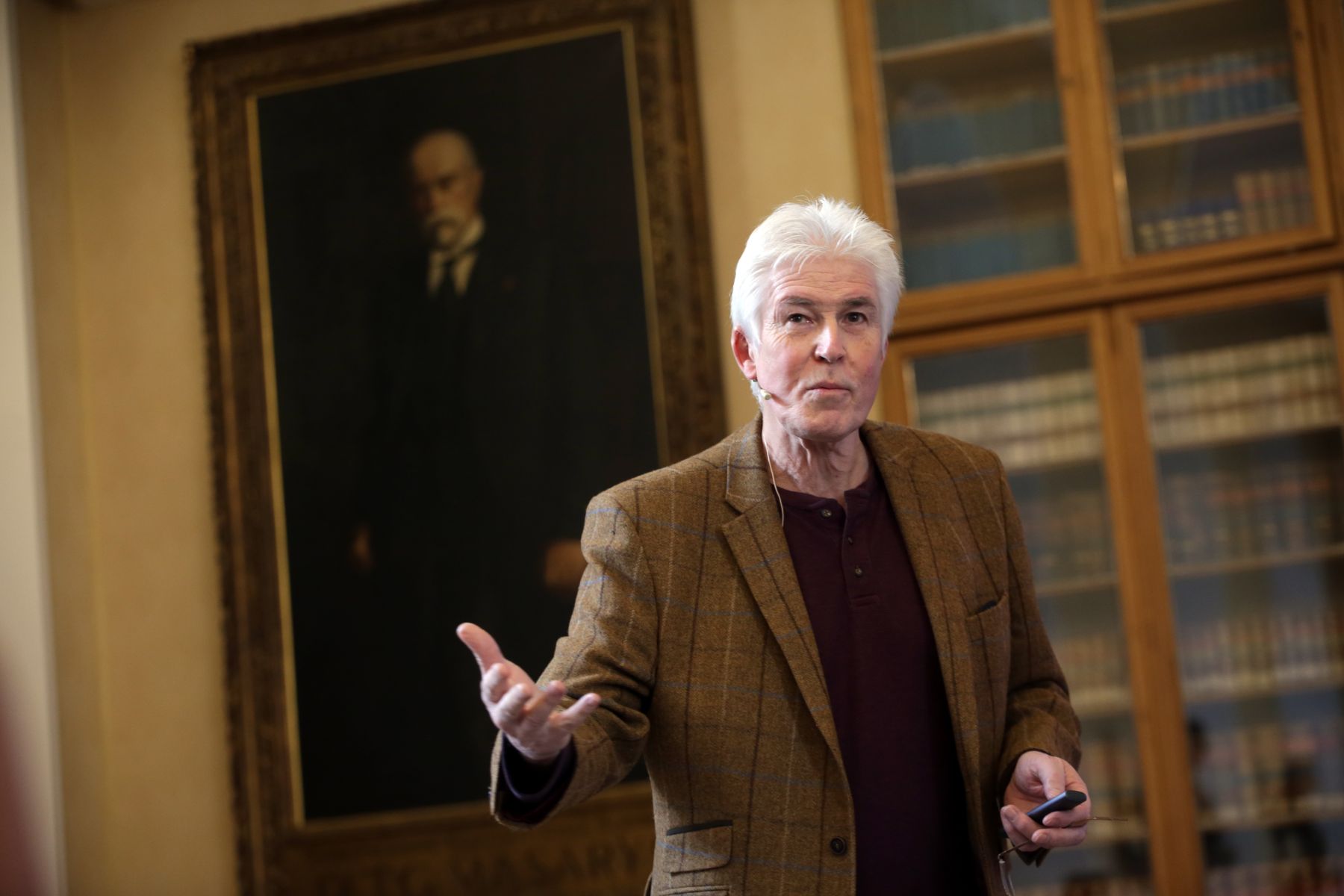
Producer and science communicator Malcolm Love.
Engaging the public
Adam Hart, biologist and professor of science communication at the University of Gloucestershire, where he teaches ecology, field biology, citizen science and communication, spoke about how to engage and involve the public in science. “Citizen Science is a great way to engage the public, get good data and media interest, and so popularise effectively,” said the scientist, whose research focuses on African ecology, conservation and insect science. He is a Fellow of the Royal Entomological Society and, among other things, helps organise the annual Insect Week, an international outreach event to celebrate insects. “We should be using our knowledge of marketing more, getting to know the different groups we are speaking to better - how to tell better stories for them and what 'better' means, but also exploring whether there are ways to reach critics,” he shared what science communication should focus on in the near future.
A long tradition in Great Britain
Science communication has a strong tradition in the United Kingdom. Fiona Fox, a long-time science journalist and head of the Science Media Centre, spoke about how to effectively connect scientists and journalists. The Centre has a database of over 2,300 experts who provide scientific context and commentary on important scientific topics and is now an indispensable resource for science journalists. “Science and health is a popular topic for the media, people are interested in science and still trust scientists, just as journalists want to communicate directly with scientists and bring the latest science topics. Our job is to help connect them,” she stressed.
The next speaker was Cristiana Vagnoni from The Parliamentary Office of Science and Technology (POST), where they produce what are known as POSTnotes and POSTbriefs - clear, concise, impartial and peer-reviewed papers on specific scientific topics, written by experts, which serve as background material for (not only) the UK Parliament.
During her talk, she shared, among other things, what questions to ask when creating a good summary: "Does it contain all the information and perspectives you wanted to include? Is it well structured? Is it clear and concise? Is it impartial? Are all the statements balanced and objective?" Currently, more than six hundred and fifty POSTnotes have been produced and all are freely available online. Topics covered include the fields of biology and health, energy and environment, physical sciences and computing, as well as social sciences.
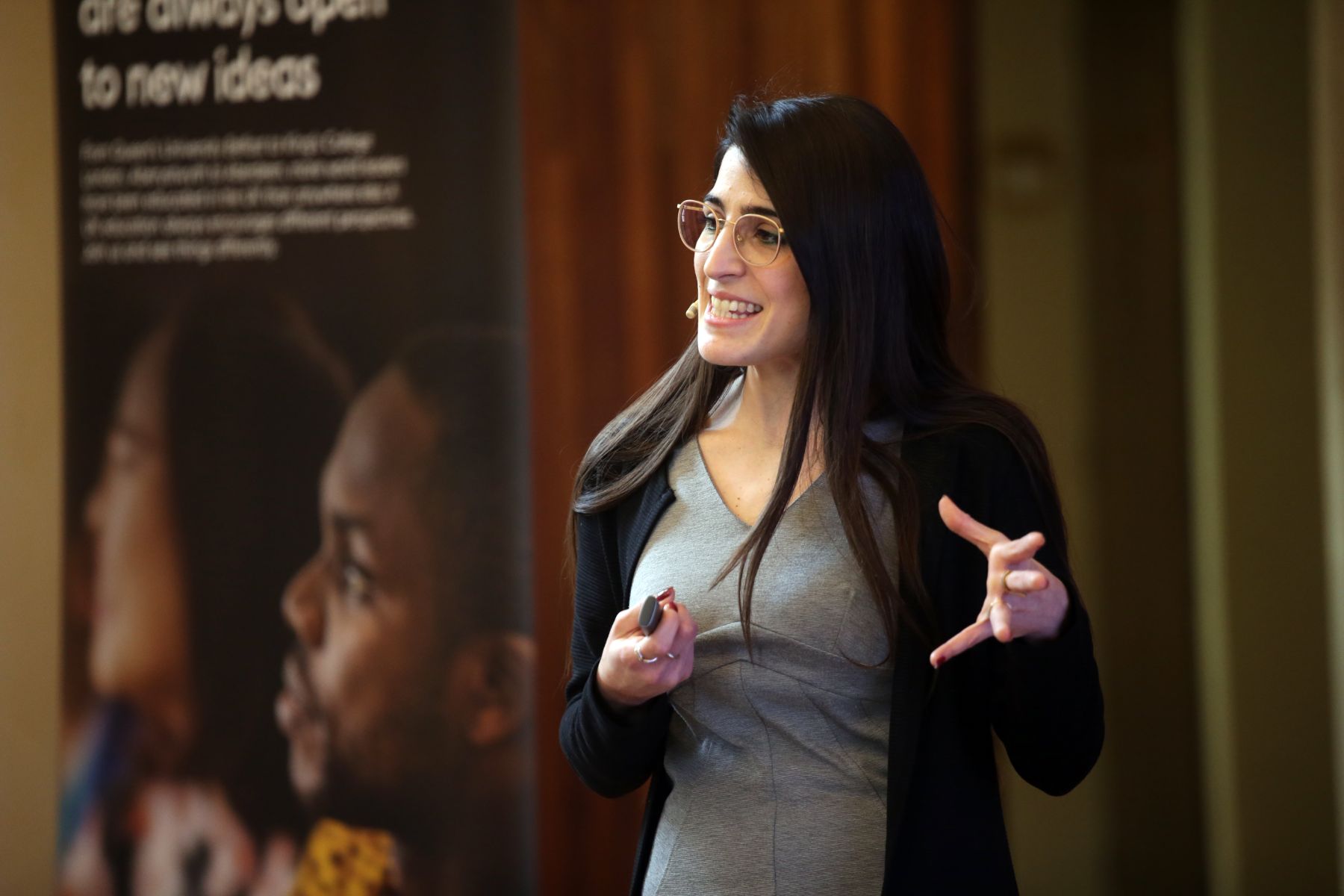
Cristiana Vagnoni of The Parliamentary Office of Science and Technology (POST).
How science communication is studied at university was presented by Stephen Webster, head of the programme at Imperial College London, and three of his students, Urszula Kaczorowska, Dave Warrell and Anna Onderkova, who studied medicine at the First Faculty of Medicine at Charles University and then went on to do a Masters in Science Communication. She shared how communication is key in doctor-patient interactions and emphasized that understanding theory helps to communicate with greater effectiveness.
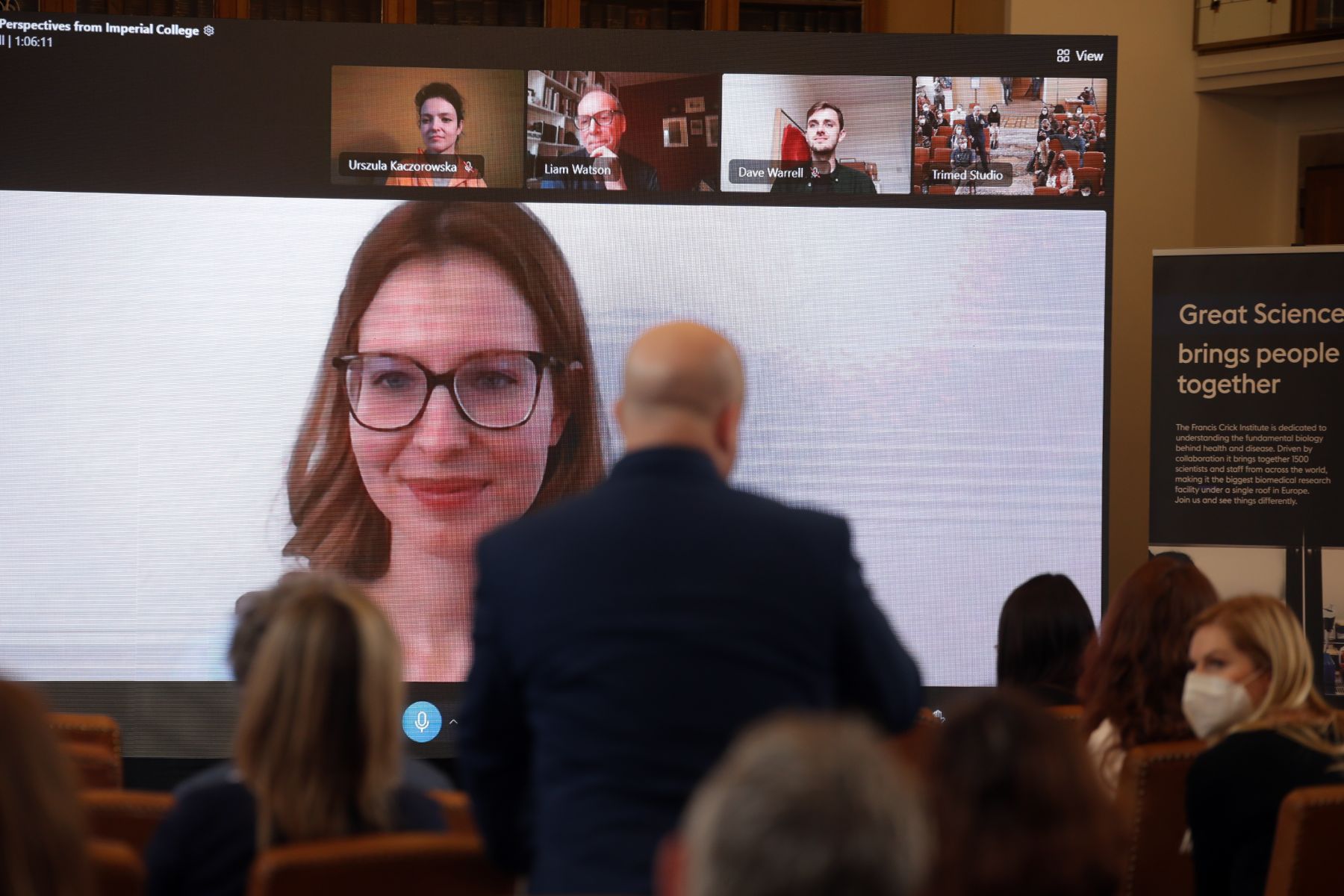
Anna Onderková responds to a question from the public.
"Connecting, explaining, listening and focusing on people and stories are the key messages that were repeated in all the presentations," Aleš Vlk - the conference moderator and founder of Vědavýzkum.cz said, summing up the day’s well-attended event.
